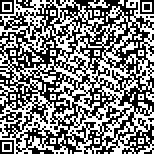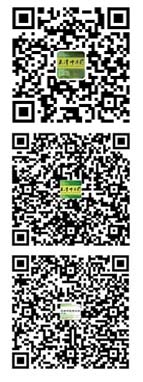| 本文已被:浏览 157次 下载 30次 |

码上扫一扫! |
|
|
| 火针疗法治疗腹泻型肠易激综合征肝郁脾虚证的临床疗效观察 |
|
付雅楠1, 黄莹2, 李姣1, 崔韶轩3, 杨圆圆4
|
|
1.秦皇岛市北戴河医院中医科, 秦皇岛 066100;2.大兴安岭地区人民医院康复科, 大兴安岭 165000;3.秦皇岛市北戴河医院消化科, 秦皇岛 066100;4.北京中医药大学东直门医院针灸科, 北京 100700
|
|
| 摘要: |
| [目的] 通过对比观察火针疗法与普通针刺疗法及蒙脱石散药物口服治疗腹泻型肠易激综合征(IBS-D)肝郁脾虚证患者的临床疗效,寻求更有效的方法指导治疗 IBS-D,并加以临床推广。[方法] 将126例IBS-D(肝郁脾虚证)患者随机分为火针组、针刺组及药物组(蒙脱石散药物口服),每组42例。3组均进行2个疗程治疗。记录并观察对比治疗前后3组患者IBS症状严重程度评分(IBS-SSS)、中医证候评分、生活质量评分(IBS-QOL)、汉密尔顿焦虑量表(HAMA)评分变化,并对比3组总体疗效。[结果] 治疗后,在IBS-SSS量表积分变化方面,3组疗效存在差异。治疗后火针组和药物组相比(P<0.05),降低IBS-SSS评分更为显著,而针刺组和药物组在改善IBS-SSS评分方面差异无统计学意义;在中医证候积分变化方面,火针组、针刺组和药物组法均可明显改善中医证候积分总分,各组治疗前后差值比较差异有统计学意义(P<0.05),其中火针组最为突出,而针刺组优于药物组。在IBS-QOL量表积分变化方面,各组治疗前后差值比较差异有统计学意义(P<0.05),提示3组治疗后均有疗效。治疗后3组生活质量积分比较差异无统计学意义(P>0.05)。在HAMA量表积分变化方面,火针组和针刺组在治疗前后,HAMA积分有显著变化,提示治疗有效。药物组在治疗前后,HAMA积分差值比较,差异无统计学意义(P>0.05)。根据疗效评定标准,疗程结束后,火针组总有效率97.61%,针刺组总有效率85%,药物组总有效率65.85%。3组疗效比较,差异有统计学意义(P<0.05),火针组疗效优于其他两组,而针刺组疗效则优于药物组。[结论] 火针疗法治疗腹泻型肠易激综合征肝郁脾虚证比蒙脱石散治疗更为有效;火针疗法优于普通针刺法,普通针刺法疗效则优于蒙脱石散治疗。火针疗法对治疗腹泻型肠易激综合征有突出的临床疗效,且安全简便,值得临床推广应用。 |
| 关键词: 腹泻型肠易激综合征 肝郁脾虚证 火针疗法 临床观察 针刺 蒙脱石散 |
| DOI:10.11656/j.issn.1672-1519.2025.02.06 |
| 分类号:R245.316 |
| 基金项目:2023年度秦皇岛市级科学技术研发与发展计划项目(202301A265)。 |
|
| Observation on the clinical efficacy of diarrhea-type irritable bowel syndrome with liver depression and spleen deficiency using fire needle therapy |
|
FU Yanan1, HUANG Ying2, LI Jiao1, CUI Shaoxuan3, YANG Yuanyuan4
|
|
1.Department of Traditional Chinese Medicine, Beidaihe Hospital of Qinhuangdao, Qinhuangdao 066100, China;2.Rehabilitation Department, People's Hospital of Greater Khingan Mountains, Greater Khingan Mountains 165000, China;3.Digestive Department, Beidaihe Hospita of Qinhuangdaol, Qinhuangdao 066100, China;4.Department of Acupuncture and Moxibustion, Dongzhimen Hospital of Beijing University of Chinese Medicine, Beijing 100700, China
|
| Abstract: |
| [Objective] To compare and observe the clinical efficacy of fire needle therapy with ordinary acupuncture therapy and montmorillonite powder oral medication in the treatment of diarrhea-type irritable bowel syndrome(IBS-D) patients with liver depression and spleen deficiency syndrome,and to seek more effective methods to guide the treatment of IBS-D,and to promote clinical practice. [Methods] The 126 patients with IBS-D(liver depression and spleen deficiency syndrome) were randomly divided into a fire needle group,an acupuncture group,and a medication group(oral administration of montmorillonite powder),with 42 cases in each group. All the three groups underwent two courses of treatment. Record and observe the changes in the severity score of IBS symptoms(IBS-SSS),traditional Chinese medicine syndrome score,quality of life score(IBS-QOL),and Hamilton Anxiety Scale(HAMA) scores of three groups of patients before and after treatment,and compare the overall efficacy of the three groups. [Results] AAfter treatment,there were differences in the efficacy of the three groups in terms of changes in IBS-SSS score. After treatment,compared with the medication group(P<0.05),and the reduction in IBS-SSS score was more significant in the fire needle group,while there was no significant difference in improving IBS-SSS score between the acupuncture group and the medication group. In terms of changes in traditional Chinese medicine syndrome scores,the fire needle group,acupuncture group,and medication group can all significantly improve the total score of traditional Chinese medicine syndrome scores. The difference between each group before and after treatment was statistically significant(P<0.05),with the fire needle group being the most prominent,while the acupuncture group was better than the medication group. In terms of the changes in IBS-QOL score,there was statistically significant(P<0.05) among the groups before and after treatment,indicating that all three groups had therapeutic effects after treatment. After treatment,there was no significant difference in the quality of life scores among the three groups after treatment(P<0.05). In terms of HAMA score changed. There was a significant change in HAMA scores before and after treatment in the fire needle group and acupuncture group,indicating effective treatment. The difference in HAMA scores between the drug group before and after treatment was not statistically significant(P>0.05). According to the efficacy evaluation criteria,after the end of the treatment course,the total effective rate of the fire needle group was 97.61%. The total effective rate of the acupuncture group was 85%. The total effective rate of the drug group was 65.85%. The therapeutic effects of the three groups were compared,and the difference was statistically significant(P<0.05). The fire needle group had better therapeutic effects than the other two groups,while the acupuncture group had better therapeutic effects than the drug group. [Conclusion] Fire needle therapy is more effective than montmorillonite powder in treating diarrhea-type irritable bowel syndrome with liver depression and spleen deficiency syndrome. Fire needle therapy is superior to ordinary acupuncture,and the efficacy of ordinary acupuncture is better than that of montmorillonite powder treatment. Fire needle therapy has outstanding clinical efficacy in treating diarrhea-type irritable bowel syndrome,and is safe,simple,and worthy of clinical promotion and application. |
| Key words: Diarrhea-type irritable bowel syndrome liver depression and spleen deficiency syndrome fire needle therapy clinical observation acupuncture montmorillonite powder |
